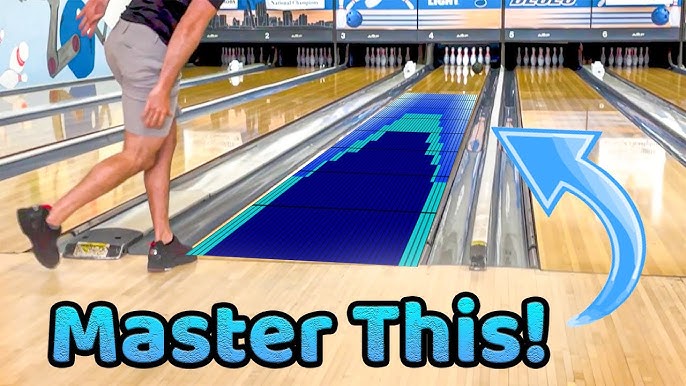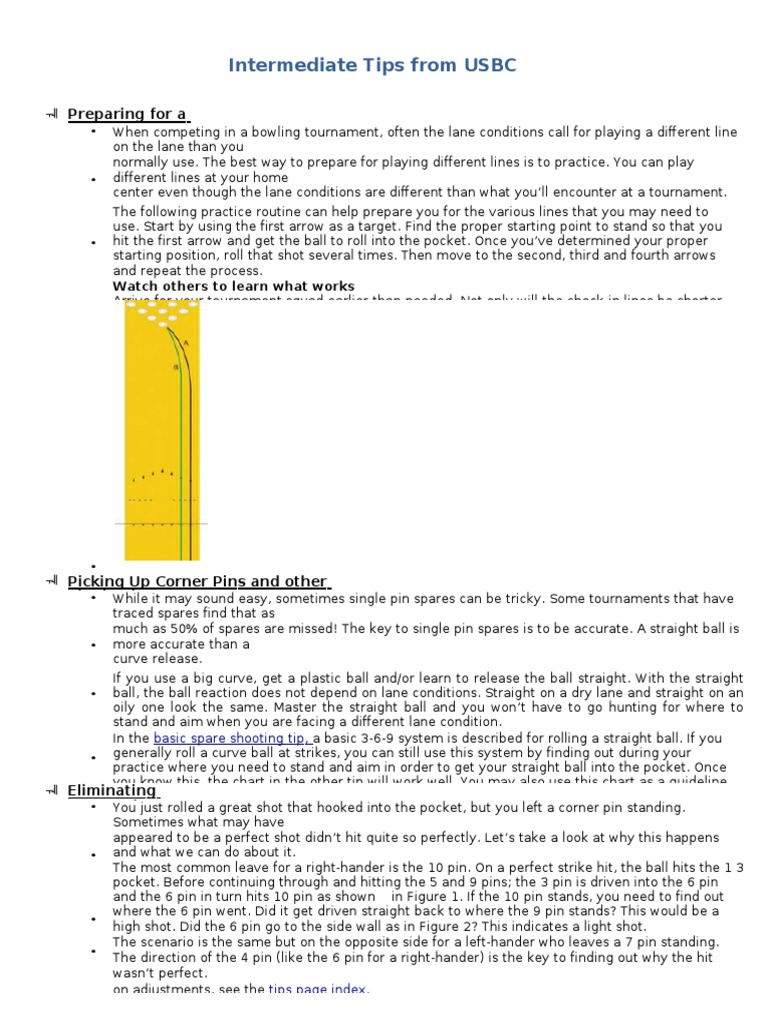How To Bowl On Oily Lanes: Strike Mastery Tips In 2024!
How to bowl on oily lanes? To bowl effectively on oily lanes, select a ball with a strong coverstock and adjust your angle. Bowlers should move their stance and aim slightly to compensate for the reduced friction.
Mastering the art of bowling on oily lanes can be daunting for even the most experienced enthusiasts. The slick surface challenges your technique and demands a strategic approach to maintaining control and precision. Understanding the right equipment to use and how to modify your delivery is essential.
A ball with a solid reactive coverstock is ideal, as it grips the lane better under such conditions. Subtle adjustments to your launch angle can also prove effective, allowing the ball to find the pocket despite the oil. This guide provides bowlers with key tips to navigate the slick terrain of heavily oiled lanes, enhancing their game play and boosting their confidence at the alley.
Also Read:
Tackling Oily Lanes: Equipment And Approach
Bowlers know that oily lanes pose a unique challenge. The right equipment and technique make all the difference. Let’s learn about the best tools and tactics for these slippery conditions.
Choosing The Right Ball For Heavy Oil
On oily lanes, a ball with the right surface and core helps you maintain control. Here are key features to look for:
- Solid coverstock for better traction
- Aggressive core design to create a strong mid-lane roll
- Lower polish finish to increase surface friction
Select a ball designed for heavy oil conditions. These balls typically feature strong asymmetrical cores and solid reactive coverstocks. They grip the lane and power through the oil.
Surface Adjustments: Scuff Pads And Sandpaper
Adjusting your ball’s surface can greatly impact its reaction on oily lanes. Use these tools for surface changes:
| Tool | Use |
|---|---|
| Scuff Pad | Creates a matte finish |
| Sandpaper | Increases the ball’s grit level |
Starting with a finer grit and moving to a coarser one allows you to fine-tune the ball’s surface. This helps it better handle the heavy oil. Always test the ball after each adjustment to gauge its reaction.
Also Read: How to Play on Chichen Itza Oil Pattern

Credit: www.reddit.com
Physical Adjustments For Oily Conditions
Struggling to find your groove on oily lanes? You’re not alone. Oily lane conditions pose a challenge to many bowlers. The ball tends to skid and may not hook as expected. Physical adjustments are key to maintaining control and precision. Let’s explore some crucial tweaks you can make to your game.
Footwork: Moving Two Boards For Better Angle
Adjusting your starting position can greatly impact your ball’s trajectory. A strategic shift in footwork enhances your angle of attack. Here’s what to do:
- Move two boards to the right for right-handed bowlers, left for southpaws.
- Aim your shot one board to the side you moved.
- This subtle change opens up the angle toward the pocket.
Hand Position: Lowering At The Start And Push Away
Hand positioning impacts your ball’s rotation and overall path. On slick lanes, a lowered hand position at the beginning of your throw can be beneficial. Here’s how to adjust:
- Start with your hand lowered in the stance phase.
- Keep it under the ball during the push away.
- This promotes a smoother transition into the swing and helps maintain control.
The Art Of Reading Lane Conditions
Mastering the game of bowling isn’t just about your throw; it’s about analyzing the lanes. Think of the lanes as a chessboard, where every oil pattern is a move you must counter. Understanding how to read and adapt to lane conditions is what separates the novices from the pros. Reading the oil on the lanes is critical, and learning to navigate these slippery conditions is not just skill—it’s an art.
Warm-up Shots: Identifying Oil Levels
Warm-up shots are your first clue to what you’re up against. Here’s how you can use them effectively:
- Start in the Center: Begin your practice on the center dot.
- Observe Ball Reaction: Watch the ball’s path closely.
- Analyze Hook Potential: Does the ball hook early, late, or barely?
Once you’ve thrown a few balls, you’ll need to evaluate their performance. A ball that hooks early suggests a dryer lane, while little to no hook indicates a slicker surface. Recognize these tendencies and prepare to adjust your strategy.
Heavy Oil Vs. Dry Lanes: Strategic Moves
Your strategy will change drastically depending on the oil level. Here are key strategies for each condition:
| Condition | Adjustment |
|---|---|
| Heavy Oil | Use a ball with a stronger coverstock. Play a more inside line. Adjust your speed and release. |
| Dry Lanes | Switch to a ball with a shinier cover. Move your starting position to the outside. Use a less aggressive release. |
On heavy oil, you’ll need a ball that can plow through oil to maintain a consistent path. Dry lanes require finesse, as balls tend to overreact and hook too much. Your adjustments are your arsenal. Equip them wisely and watch as your game levels up.

Credit: m.youtube.com
Optimizing Your Throw On Slippery Surfaces
Bowling on oily lanes presents unique challenges. Understanding how to optimize your throw can lead to more strikes and higher scores. Traction is reduced, making the ball’s path less predictable. Gripping the lane surface becomes crucial. Skillful adjustments turn slippery lanes into an advantage.
Targeting Strategies On Oily Lanes
Oily lanes require a targeted approach. Bowlers must focus on precise aim, stable footing, and reading lane conditions. The goal is to find the ideal line to the pocket. It may shift from your usual mark. Here are some tactics:
- Move laterally – Shifting your stance left or right can help find more friction.
- Adjust your mark – Target further down the lane to delay the ball’s hook.
- Visualize the angle – Imagine the ball’s path from release to pins.
Adjusting Ball Speed And Rotation
Adjustments to speed and rotation combat lane oil. A slower ball absorbs more oil, improving traction. High rotation increases angle into the pins. Both changes affect the ball’s reaction. Experiment to find the best balance. Here’s a checklist:
| Adjustment | Effect |
|---|---|
| Reduce speed | Increases oil absorption and hook potential |
| Increase rotation | Enhances entry angle and pin carry |
| Control release | Manages ball motion down the lane |
Maintenance And Adaptation: A Bowler’s Perspective
Welcome to the slick challenge: bowling on oily lanes. Here’s a bowler’s perspective on how to stay ahead in the game. Understand the patterns on the lanes. Adapt to changes quickly. Use the knowledge to score big. Keep reading for expert tips.
Understanding Lane Oil Patterns
Know the battlefield. Different lanes have different oil patterns. These patterns affect how your ball moves. Heavy oil in the middle or more oil on the ends? Find out. That knowledge is a game-changer.
- Common Patterns:
- House Pattern: Easiest, more forgiving.
- Sport Pattern: Tricky, more skill required.
Study the pattern. Use this info to pick your approach, ball, and technique.
Responding To Changing Lane Conditions
As you play, the lane conditions change. Oil shifts or depletes. Observe and adjust. That’s the secret to consistent scores.
| Condition | Adjustment |
|---|---|
| Oil depletion | Move your stance slightly. Aim at a different board. |
| Oil carry-down | Choose a ball with a stronger backend reaction. |
Practice reads the lane. The quickest learners adapt fastest. Your game will improve. Enjoy conquering those tricky oily lanes!

Credit: www.scribd.com
Frequently Asked Questions On How To Bowl On Oily Lanes
What To Do When The Lanes Is Too Oily?
Use a ball with a strong coverstock and aggressive core. Adjust your stance and movement to the right. Slow down your delivery, and play deeper angles. Focus on a consistent release and consider surface adjustments.
How Do You Bowl On Long Oil?
To bowl on long oil, choose a ball with a strong coverstock. Start with a smooth release and adjust your stance further left for right-handed bowlers. Aim for inside targets to maintain angle. orneys
How Do You Tell If A Bowling Lane Is Dry Or Oily?
To determine if a bowling lane is dry or oily, observe your ball’s reaction. A quick hook indicates a dry lane; minimal hook suggests it’s oily.
What Do They Use To Oil Bowling Lanes?
Bowling lanes are oiled using a special conditioner, often referred to as lane oil or lane conditioner.
What Ball Works Best On Oily Lanes?
Choosing a ball with a strong, aggressive coverstock and a solid asymmetric core is best suited for oily lane conditions due to better traction and hook potential.
Conclusion
Mastering your approach to bowling on oily lanes can be the key to upping your game. Always remember to adjust your stance, select the right equipment, and stay adaptive. Consistent practice on different oil patterns will sharpen your skills. Grab your bowling shoes, it’s time to strike out those challenges.
Ready to bowl a perfect game? Roll on!

Passionate Bowler and Bowling Enthusiast
Jess Pinelli is a dedicated bowling enthusiast with a deep love for the sport that spans over 6 years. With numerous strikes, spares, and a few gutter balls under hes belt, he has honed his skills on lanes across the country. Pinelli’s journey in the world of bowling has been a remarkable one, from casual weekend games with friends to competitive league play and even a few local tournaments.
Driven by her passion for the game, Pinelli decided to channel her expertise and knowledge into the digital realm, becoming a prolific author on this bowling website. She’s your go-to source for everything bowling-related, from mastering the perfect hook to choosing the right bowling ball and even navigating the world of bowling etiquette.
When she’s not busy writing informative articles or reviewing the latest bowling gear, you’ll likely find Pinellis at her favorite local bowling alley, helping newcomers improve their game or enjoying some friendly competition with fellow bowlers. She firmly believes that bowling is not just a game but a community, and she’s committed to fostering that sense of camaraderie both online and offline.
